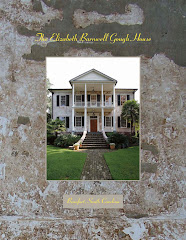
A highly successful planter, John Gibbes Barnwell owned more than six plantations. His first and chief property was his 2000 acre plantation on Coosaw Island. He later inherited property on Parris Island and in the 1820s he purchased a plantation from Frenchman Georges Roupel known as The Ferry. It was named for its location next to the Port Royal Ferry at the northern tip of Port Royal Island overlooking the Whale Branch River. When the main house at The Ferry burned, John Gibbes Barnwell built a new one on the ruins of the old and named the property Roupelmonde. He later gave the plantation to his daughter Mary, possibly to serve as part of her dowry. She married Col. Middleton Stuart in 1829, the year following her father’s death.
At the time of his death, John Gibbes Barnwell properties also included a one-eigth share in the 4000 acre hunting preserve known today as Hunting Island and Retreat Plantation, both of which his son inherited. John Gibbes Barnwell II later sold Retreat Plantation to Rev. Edward T. Walker, the husband of his younger sister Ann Bull Barnwell.
After the death of his father, John Gibbes Barnwell II took over the management of the family’s properties, which included an additional two plantations on the mainland and 146 acres on Pigeon Point that his mother acquired in 1839.
The antebellum world of wealth and privilege based on the plantation system and slavery, however, would not last John Gibbes Barnwell II’s lifetime. On November 7, 1861 Union forces entered Port Royal Sound – their objective to take the finest, natural deep-water port south of New York. Fort Beauregard and Fort Walker soon fell, leaving Beaufort and the surrounding islands to the Union for the duration of the war.
Please note that the material in this blog is copyrighted. It is not to be reproduced without my specific written permission.
.jpg)
